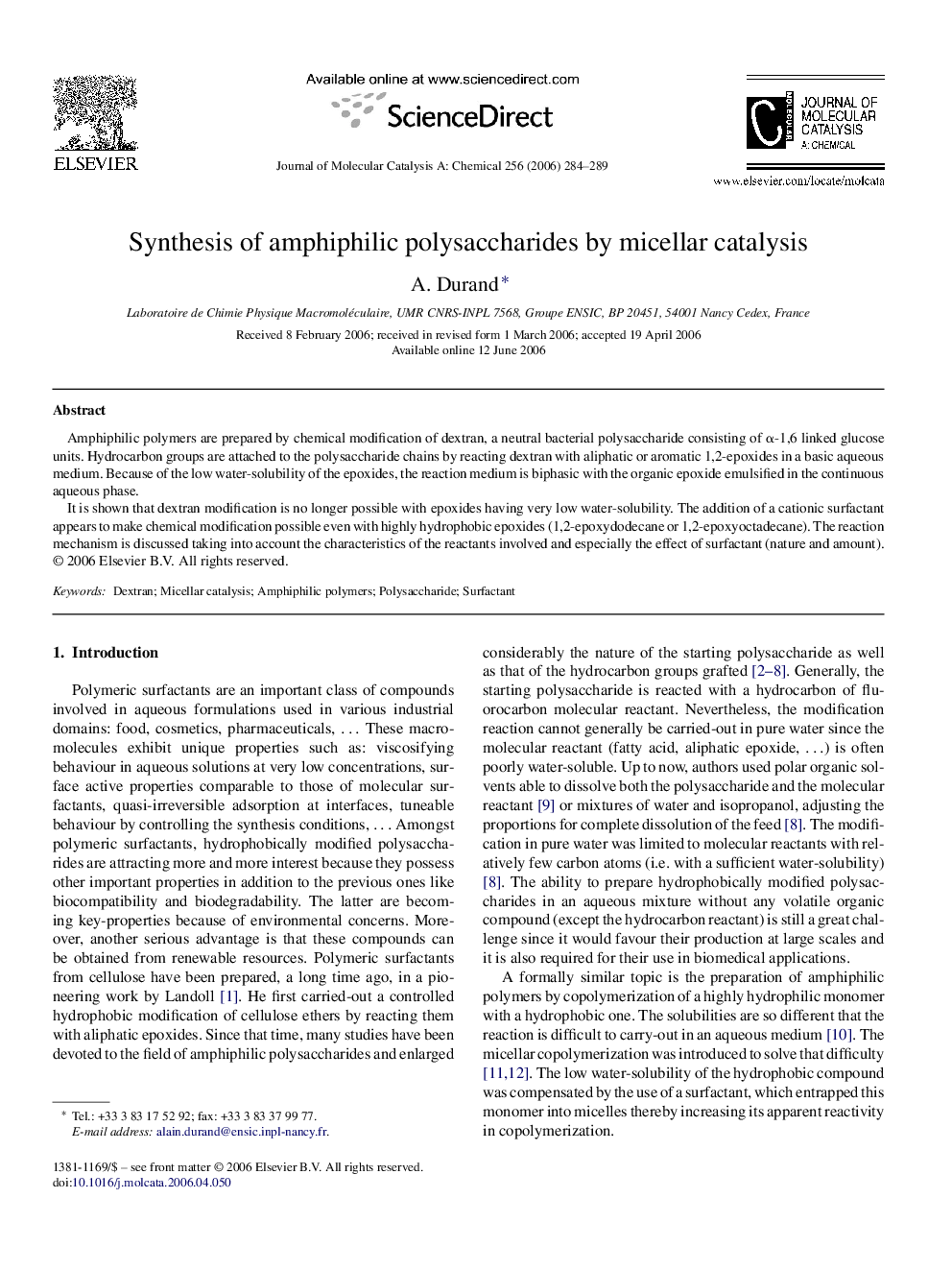| Article ID | Journal | Published Year | Pages | File Type |
|---|---|---|---|---|
| 68626 | Journal of Molecular Catalysis A: Chemical | 2006 | 6 Pages |
Amphiphilic polymers are prepared by chemical modification of dextran, a neutral bacterial polysaccharide consisting of α-1,6 linked glucose units. Hydrocarbon groups are attached to the polysaccharide chains by reacting dextran with aliphatic or aromatic 1,2-epoxides in a basic aqueous medium. Because of the low water-solubility of the epoxides, the reaction medium is biphasic with the organic epoxide emulsified in the continuous aqueous phase.It is shown that dextran modification is no longer possible with epoxides having very low water-solubility. The addition of a cationic surfactant appears to make chemical modification possible even with highly hydrophobic epoxides (1,2-epoxydodecane or 1,2-epoxyoctadecane). The reaction mechanism is discussed taking into account the characteristics of the reactants involved and especially the effect of surfactant (nature and amount).
Graphical abstractAmphiphilic polymers are prepared by chemical modification of dextran. Hydrocarbon groups are attached to the polysaccharide chains by reacting dextran with 1,2-epoxides in a basic aqueous medium. The reaction medium is biphasic with the organic epoxide emulsified in the aqueous phase.Adding a cationic surfactant appears to make chemical modification possible even with highly hydrophobic epoxides (1,2-epoxydodecane or 1,2-epoxyoctadecane). Figure optionsDownload full-size imageDownload as PowerPoint slide
